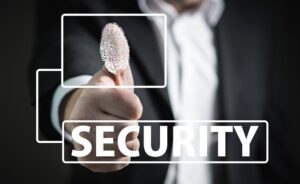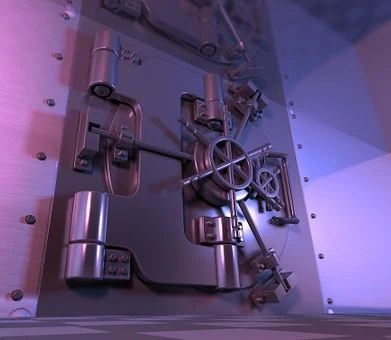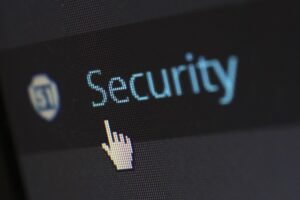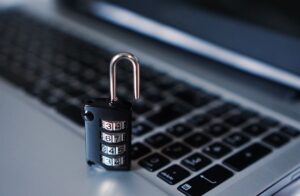When it comes to keeping your money safe, physical security measures in banks are of the utmost importance. In today’s digital world, it can be easy to forget the basics when it comes to protecting our assets. Banks, however, must prioritize physical security measures to ensure their customers’ money remains safe and secure. In this blog post, we’ll explore the various physical security measures that banks use to protect your money.
Must read this article I think you are missing something: What are the applications of biometrics in cybersecurity
What are physical security measures?
Physical security measures are the methods and protocols that businesses, organizations, and individuals use to protect themselves from physical threats. This includes things such as locks, alarms, surveillance cameras, and other physical barriers. Physical security measures act as a deterrent to potential thieves and burglars, making it more difficult for them to gain access to a building or property.
Examples of physical security measures include locks on doors and windows, alarms and CCTV surveillance cameras, guard dogs, barbed wire fencing, and security guards. These measures are designed to detect and deter any unauthorized personnel or suspicious activity that might be present in an area. In the case of banks, physical security measures are especially important since they handle large amounts of money and other valuable assets.
Physical security controls are put in place to monitor and control access to restricted areas, limit the amount of time someone is allowed in certain areas, and provide physical protection to people, property, and assets. For example, banks typically have restricted access to their vaults and require identification for entry. They may also have guards patrolling the premises or motion sensors installed in certain areas. All of these measures serve as physical safeguards against burglars and other criminals.
How do physical security measures help protect banks?
Physical security measures are important in keeping a bank’s customers, employees, and assets safe. These measures are used to prevent unauthorized access, theft, vandalism, and other types of criminal activity. What are the physical security measures? Examples of physical security measures include locks, alarms, surveillance cameras, fencing, access control systems, and security guards. Physical security controls can also be used to ensure that only authorized personnel have access to certain areas of the bank.
These measures help protect banks from potential threats by restricting access to sensitive information and deterring crime. Security cameras can provide visual evidence of any suspicious activity, while alarms can alert authorities to potential threats. Locks and fences can help prevent break-ins, while access control systems can help prevent unauthorized access to secure areas. Security guards can also help deter potential criminals.
What are some common physical security measures used in banks?
When it comes to protecting a bank and the money it holds, physical security measures are a must. But what are the physical security measures that banks use? Physical security measures are any type of protective device or procedure used to prevent unauthorized access to a building, facility, or another asset. Examples of physical security measures used in banks include:
• Access control systems:
Access control systems are electronic locks that require an authorized user to input a unique combination in order to gain entry. Banks use these systems to restrict access to certain areas and monitor who enters the building.
• CCTV cameras:
Closed-circuit television (CCTV) cameras are widely used in banks to monitor activity and record footage for later review. CCTV cameras are also a useful tool for identifying potential thieves.
• Security guards:
Banks typically employ security guards to help deter potential burglars or intruders. Security guards patrol the premises and keep an eye out for suspicious activity.
• Armored vehicles:
Armored vehicles are used to transport large amounts of money between locations. The vehicles are built to be strong and durable, making them difficult to break into.
• Security fences:
Security fences are another common physical security measure used in banks. Fences are designed to prevent people from gaining unauthorized access to the premises.
These are just a few of the physical security measures used in banks. It’s important for banks to take a comprehensive approach to security and implement multiple layers of protection. When combined with other security measures, physical security can go a long way toward keeping a bank and its money safe.
Are physical security measures enough to protect banks?
The answer to this question is both yes and no. What are the physical security measures that banks use? These are tangible objects, materials, and devices that help protect the premises of a bank from any unwanted access or activity. Examples of physical security measures include locks, bars, gates, fences, surveillance cameras, guard dogs, and alarms.
What are the physical security controls that banks use? These are policies, procedures, and processes that help ensure the protection of their property, personnel, and customers. For example, some banks may require visitors to show their identification or sign in before entering the premises. They may also have strict rules about visitors entering certain areas of the bank, such as the vault.
However, physical security measures alone may not be enough to protect banks from potential threats. Banks need to be proactive in their security measures by implementing other forms of protection such as cybersecurity, customer authentication procedures, and employee training. Banks must also stay alert and report any suspicious activity immediately to the proper authorities. It’s important for banks to have comprehensive security measures in place to ensure the safety of their customers and their assets.
What other steps can banks take to further protect themselves?
In addition to implementing what are physical security measures, banks must also take additional steps to ensure the safety of their customers and their assets. Banks can employ various technologies, such as electronic surveillance and secure authentication methods, to increase their security.
For example, banks may use biometric authentication systems to ensure that only authorized personnel have access to sensitive information and areas.
Banks may also take extra precautions to protect their cash reserves, such as using special locks on their safes and setting up video surveillance on the premises. Banks should also conduct regular security audits to identify potential risks and areas for improvement. They should also invest in staff training and awareness programs so that employees can spot potential threats.

Conclusion
Lastly, banks should make sure to stay up to date with the latest security trends and technologies so they can respond quickly to changing threats. By taking these steps, banks can ensure that their physical security measures, such as the examples of physical security measures mentioned earlier, are effective and that their what are physical security controls remain in place.






